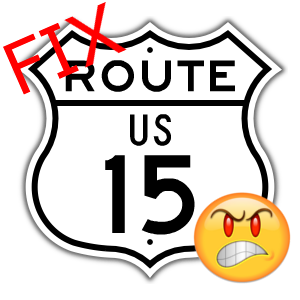The state of New Jersey, the Garden State, was once the garden spot to slightly more than 100 traffic circles at one point. It was an idea that had originally served its purpose well – way back in the 1920s! However, starting around the 1970s, New Jersey began phasing this type of road design out as populations grew. In fact, there are only a few traffic circles left today. The primary reason for their elimination was that the increased number of drivers on the roads resulted in traffic circles being more likely to hinder traffic flow than ameliorate traffic congestion. Moreover, the increased number of vehicles and faster traffic speeds made traffic circles even more dangerous and accidents more frequent. So one has to ask themselves, why are the special interest groups advocating for roundabouts rather than widening on Route 15 North, when they know that those roundabouts pose significant safety challenges to our families AND STILL fail to address traffic congestion given the massive North-South traffic flow on Route 15? The answer is quite simple – roundabouts are now being heralded as a “traffic calming” mechanism. Traffic calming is the code word for further reducing capacity by lowering the speed limit to approximately 10-15 MPH in the roundabout on a road that has vehicle volumes at almost 300% of what Route 15 was engineered to handle back in the late 1940s to early 1950s. As we’ve shown the last two days, roundabouts by themselves are woefully inadequate to address the massive North-South traffic flow on Route 15. In summary, the special interest groups’ mantra has been oft repeated as one for improving safety, access and flow. However, their advocacy for single lane, “traffic calming” roundabouts with no widening really results in increasing congestion since this type of roundabout cannot accommodate more than 25,000 vehicles per day – a number that is below the current day 26,000 vehicles per day in the 3.5 mile stretch of Route 15 between Battlefield Parkway and Montresor Road. It is a safe bet that in 10 years when this project is completed, the daily number of vehicles will have increased substantially above the current day volume, further rendering the design obsolete before it is even constructed. Whether a traffic circle or roundabout, the daily number of North-South vehicles will make these designs obsolete. So again, one has to ask themselves, why are the special interest groups advocating for roundabouts that pose significant safety challenges to our families and school children with increased risks of accidents AND STILL fail to address traffic congestion? The answer is pretty clear; “People Die On Roads, Driving is a Dangerous Business!” Remember, the data and science do not support roundabouts on Route 15 – don’t be fooled by the hype! It’s nothing more than “no-growth” hysteria masquerading around as science and transportation engineering.
